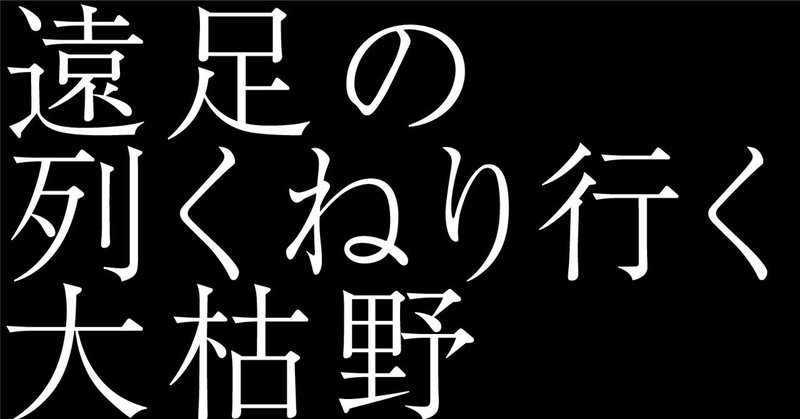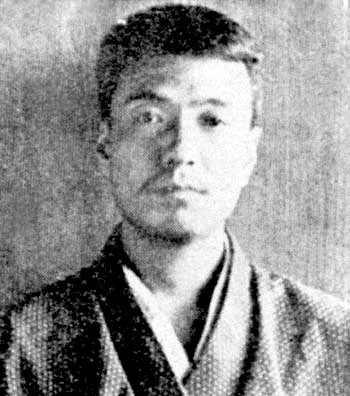
#303 AIが俳句を解釈したらこうなった。 「遠足の列くねり行く大枯野」高浜虚子
遠足の列くねり行く大枯野
高浜虚子
"A line of hikers winds through the vast barren field."
Takahama Kyoshi

解説:
この俳句「遠足の列くねり行く大枯野」は、高浜虚子によって作られました。この作品は、季節の変化と人間活動を巧みに描写し、自然の中での人間の存在を感じさせる情景が展開されています。
風物詩
この俳句は、遠足という行事を通じて、春の季節を感じさせます。遠足は、学校や団体が主に春に行うアクティビティで、自然の中を歩き、親しむ機会を提供します。ここでの「大枯野」という言葉は、広大な枯れた野原を指し、季節の移り変わりの中での一時的な風景を示しています。これは、新しい生命が芽吹く前の、春の初期の姿を捉えているかもしれません。
表現手法
俳句における「列くねり行く」という表現は、遠足に参加している人々が曲がりくねった道を行く様子を表しています。この動きは、枯野を行く遠足の子どもたちや参加者が一列になって進む姿を視覚的にも鮮明に伝えており、風景の中に動的な要素を加えています。この動きは、静かで広大な枯野の中での人間活動の小さな兆しとして描かれており、自然と人間の関係性を強調しています。
情緒や感情
この俳句は、控えめながらも深い情感を含んでいます。枯野という荒涼とした風景と、生き生きとした子どもたちの遠足という対照的なイメージが、新旧、生と死、始まりと終わりといったテーマを想起させるかもしれません。また、春の訪れを前にしてまだ色づかない大地を歩くことで、季節の変化への期待や自然の中でのひとときの楽しみが感じられます。
全体として、高浜虚子のこの俳句は、自然の中で繰り広げられる人間の活動を通じて、季節の移り変わりとそれに伴う感情の変化を表現しています。読者にとっては、自然の広がりとそこに溶け込む人間の姿から、生命の営みと時間の流れを感じ取ることができるでしょう。
英訳:
Explanation
This haiku by Takahama Kyoshi beautifully captures a moment where human activity intersects with the natural landscape, offering a vivid scene that evokes the changing of the seasons.
Seasonal Imagery
The haiku highlights a school outing or group hike, a common activity in spring. It is set in a "vast barren field," which connotes a large, empty landscape possibly at the end of winter, just before spring fully blooms. This setting suggests a transition period where life is about to burst forth, portraying the starkness just before the renewal that spring brings.
Artistic Expression
The phrase "winds through" is particularly evocative, describing the meandering path of the hikers in the barren field. This imagery not only creates a visual of the line moving through the desolate landscape but also adds a dynamic element to the otherwise still and stark field. It shows a small, lively human element moving through a vast, static environment, enhancing the contrast between human life and the dormant nature around them.
Emotional and Sentimental Tone
The haiku reflects a subtle yet profound emotional landscape. The contrast between the barren field and the energetic hikers can be seen as a metaphor for life and renewal against a backdrop of emptiness and stagnation. It may evoke feelings of anticipation for the new life that spring will soon bring and the joy of experiencing nature, even before it fully awakens. The setting and the activity together create a poignant moment of interaction between humanity and the natural world, suggesting themes of rebirth, resilience, and the cyclic nature of life.
Overall, Kyoshi's haiku not only depicts a simple scene of hikers in a field but also invites deeper reflection on the rhythms of nature and human engagement with it. It resonates with themes of anticipation and change, offering a contemplative look at the moments just before nature renews itself.
高浜虚子

高浜虚子(1874年2月22日 - 1959年4月8日)は、明治から昭和にかけて活躍した日本の俳人であり、小説家でもあります。彼は本名を高浜清といい、俳号として虚子を名乗りました。高浜虚子は、正岡子規の一番弟子として知られ、子規の死後「ホトトギス」の主宰を引き継ぎ、この雑誌を通じて俳句の発展に大きく貢献しました。
彼の俳句のスタイルは「客観写生」と呼ばれるもので、直接的な自然観察を通じて感情を表現する方法を取り入れています。このスタイルは花鳥諷詠(かちょうふうえい)とも称され、自然の美しさを詠じながらも人の情を含ませる技法です。虚子は生涯にわたりこのスタイルを守り続け、多くの弟子にもこの精神を教えました。
高浜虚子は、俳句だけでなく散文や小説も手がけ、その文学活動は多岐にわたります。彼の代表作には、俳句集「五百句」や「六百句」、散文集「俳句の五十年」などがあります。また、彼はその生涯で約10万句もの俳句を詠んだとされています。
詳細は、Wikipediaの高浜虚子のページで確認できます。
四月二十五日
(英訳:ChatGPT 解説:Bing / ChatGPT 画像生成:midjourney)
この記事が気に入ったらサポートをしてみませんか?
